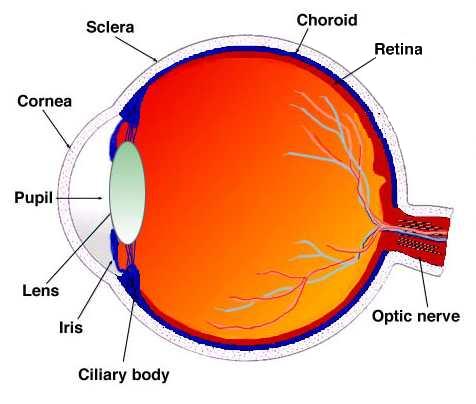|
It is important to
understand the vulnerable nature of the retina, and how the simple act of
aging can alter its ability to carry out its normal function. You might want
to envision the retina as wallpaper on the back wall of the inside of the
eyeball. Unlike wallpaper, however, the retina is a living tissue. It
contains cells that tell the brain what is within your field of vision. Like
cells everywhere, they need nourishment to survive.
The retina lies atop a
membrane called Bruch's membrane. Nourishment flows to the retina from blood
vessels just beneath Bruch's membrane; similarly, waste products from the
retina flow through Bruch's membrane to be carried away by the blood
vessels.

As we age, some waste
products accumulate in the membrane. This happens to everyone but in some
people small mounds of waste called drusen form. Enough drusen can
accumulate to interfere with the transfer of nutrients and waste products
between the blood vessels and retina.
One way the eye responds to
a lack of nourishment is for many of the retinal cells to die. The wasting
of retinal cells occurs most commonly in the macula, or central area, of the
retina. Hence the name macular degeneration. In this case, the disorder is
termed dry age-related macular degeneration (AMD). Drusen accumulate, cells
die, and vision gradually blurs and words become difficult to read.
Fortunately, loss of vision in dry macular degeneration is not usually rapid
and severe. The goal of treatment is to prevent or reduce the formation of
debris within Bruch's membrane.
A second way the eye
responds to the drusen is to send new blood vessels, from beneath Bruch's
membrane, to the retina. Unfortunately, these new blood vessels can leak
blood or fluids and cause wet macular degeneration. Like water behind
wallpaper, this causes a blister to form—and an elevated and uneven retinal
surface. Symptoms of wet AMD vary from person to person but vision
characteristically becomes distorted and blurred. The goal of treatment for
wet macular degeneration is to stop the formation and leakage of the new
blood vessels. New procedures are rapidly being developed.
|